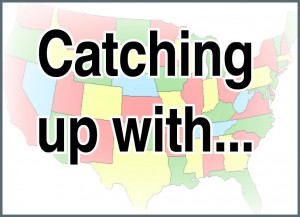 Editor’s Note: This is part of a series that will highlight some of this year’s major state legislature activity as it relates to Career Technical Education (CTE). Further explanation of the series can be found here and the first installment here. For a comprehensive look-back at the 2013 legislative sessions, check out the “2013 CTE Year in Review,†which was published jointly by NASDCTEc and the Association for Career and Technical Education in March.
Editor’s Note: This is part of a series that will highlight some of this year’s major state legislature activity as it relates to Career Technical Education (CTE). Further explanation of the series can be found here and the first installment here. For a comprehensive look-back at the 2013 legislative sessions, check out the “2013 CTE Year in Review,†which was published jointly by NASDCTEc and the Association for Career and Technical Education in March.
With more than 80 percent of high schools now enrolling students in dual enrollment coursework, it’s not a huge surprise that dual enrollment continued to expand its reach during the 2014 legislative sessions across the country.
In Alabama, the governor signed a bill that seeks to incentivize a CTE dual enrollment scholarship program. The scholarship program was first proposed by Gov. Robert Bentley’s College and Career Ready Task Force in January and further championed in the governor’s State of the State address.
The scholarship program is intended to be funded by private donations from businesses and individuals, who in turn would receive a 50 percent tax credit on their donations. The law sets aside $5 million dollars for tax credits each year, providing $10 million in scholarships for 9,500 students each year. Additionally, businesses that donate to the program can direct up to 80 percent of their donation to train students for a particular field.
In Alaska, this year’s legislative session was dubbed “the education session†by Gov. Sean Parnell in his State of the State address in January. Whether that focus was achieved still appears unclear, but one large omnibus education bill did pass both chambers and was signed by the Governor last month. Expanded CTE dual credit options were among the bill’s final contents. Institutions that receive funding through the state’s Technical and Vocational Education Program (TVEP) must establish and maintain partnerships with Alaska schools for dual credit in high school and toward certification.
Florida and Oregon also expanded eligibility for dual enrollment. Now, Florida students can begin enrolling in dual-credit courses starting in the sixth grade, and in Oregon, students in the 9th and 10th grades are now eligible.
Finally, Montana Gov. Steve Bullock announced recently that educators who teach dual enrollment classes will earn coupons to pay for their own college credits. Gov. Bullock said the program is designed to increase the number of dual credit courses available by providing an incentive to instructors themselves. Under this new credit-for-credit program, which will be funded by the Office of the Commissioner of Higher Education, an educator with a master’s degree teaching a dual-credit course will receive a coupon that can be used toward classes in the Montana University System as well as tribal and community colleges. These credits are also transferrable, meaning teachers can give these credit coupons to friends, family or even their students. The pilot program will start this fall and end in spring 2016.
Andrea Zimmermann, State Policy Associate

